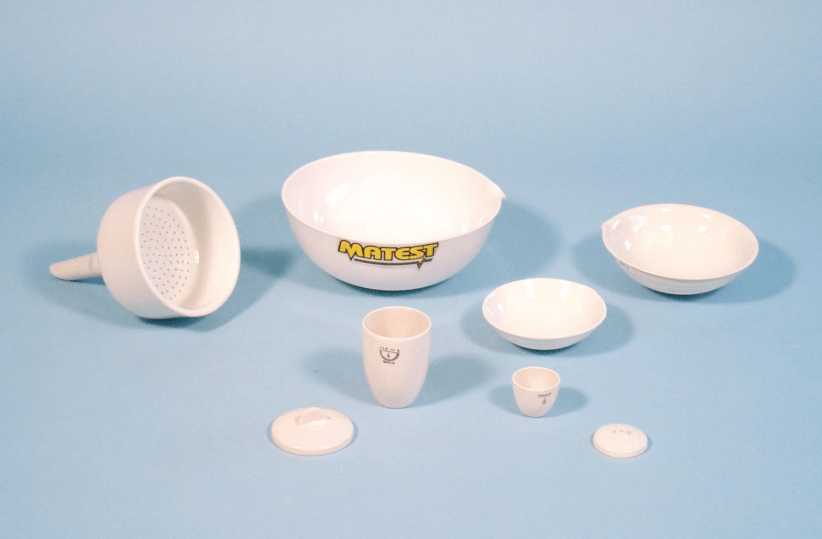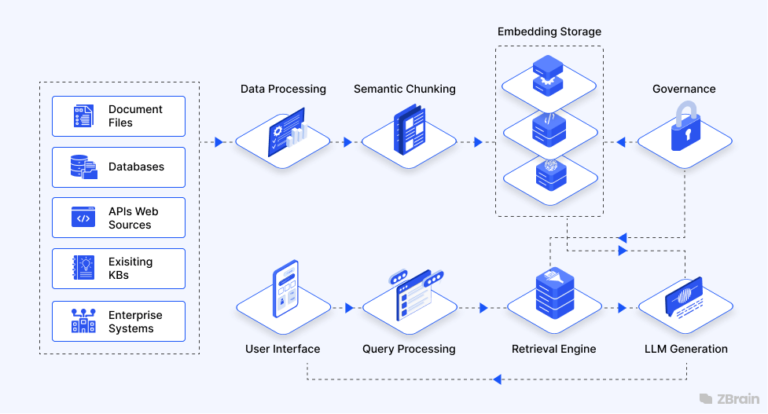What Safety Precautions Should I Take When Using an Evaporating Dish?
Understanding Evaporating Dishes and Their Applications
Evaporating dishes represent fundamental laboratory equipment used extensively in analytical chemistry, research laboratories, and educational institutions worldwide. These shallow, wide-bottomed vessels are specifically designed to facilitate the controlled evaporation of solvents from solutions, leaving behind solid residues for analysis or further processing. Understanding the fundamental principles and applications of evaporating dishes is crucial for maintaining safety throughout their use.
The primary function of an evaporating dish involves heating liquid samples to promote solvent evaporation while containing the sample within a controlled environment. This process is essential for concentrating solutions, isolating solid compounds, and preparing samples for subsequent analytical procedures. The wide, shallow design maximizes surface area exposure to heat while minimizing the risk of sample loss through splashing or violent boiling.
Materials commonly used in evaporating dish construction include porcelain, borosilicate glass, and various metals such as stainless steel or platinum. Each material presents unique safety considerations that must be thoroughly understood before use. Porcelain dishes offer excellent thermal stability and chemical resistance but can be prone to thermal shock if heated too rapidly. Borosilicate glass provides superior chemical inertness and thermal shock resistance but requires careful handling to prevent breakage. Metal dishes offer exceptional durability and heat transfer properties but may react with certain chemicals or introduce contamination in sensitive applications.
The selection of an appropriate evaporating dish depends on several factors including the chemical nature of the sample, required heating temperatures, and the specific analytical requirements of the procedure. Understanding these factors is essential for maintaining safety and achieving accurate results. Chemical compatibility between the dish material and the sample being processed must be carefully evaluated to prevent unwanted reactions, contamination, or equipment failure.
Temperature considerations play a crucial role in evaporating dish safety. Different materials have varying thermal expansion coefficients and maximum operating temperatures. Exceeding these limits can result in equipment failure, sample loss, or safety hazards. Understanding the thermal properties of your specific evaporating dish material is fundamental to safe operation.
See also: Why First Choice Business Brokers of the Triangle Is the Leading Raleigh Business Broker
Essential Safety Equipment and Personal Protective Equipment
Personal protective equipment represents the first line of defense when working with evaporating dishes in laboratory environments. The specific PPE requirements depend on the chemicals being processed, the heating methods employed, and the overall risk assessment of the procedure. Comprehensive understanding and consistent use of appropriate PPE is non-negotiable for maintaining laboratory safety.
Eye protection is paramount when using evaporating dishes, as the combination of heat, chemicals, and potential splashing creates significant risk of eye injury. Safety glasses or goggles must be worn at all times during evaporation procedures. The selection between safety glasses and goggles depends on the specific hazards present. Chemical splash goggles provide superior protection against liquid chemicals and vapors, while safety glasses may be sufficient for routine procedures with minimal splash risk.
Hand protection requires careful consideration of the specific chemicals and temperatures involved in the evaporation process. Heat-resistant gloves are essential when handling hot evaporating dishes or working near heat sources. However, the selection of appropriate gloves depends on the chemical resistance requirements of the specific procedure. Some chemicals may penetrate or degrade certain glove materials, requiring specialized chemical-resistant gloves. The use of multiple glove layers may be necessary for procedures involving both heat and chemical hazards.
Respiratory protection becomes critical when working with volatile or toxic chemicals that may be released during the evaporation process. Adequate ventilation is the primary control measure, but supplemental respiratory protection may be required for particularly hazardous chemicals. The selection of appropriate respiratory protection depends on the specific chemicals involved and their permissible exposure limits.
Laboratory coats or aprons provide essential protection against chemical spills and splashes that may occur during evaporation procedures. The material and style of protective clothing should be selected based on the specific hazards present. Flame-resistant materials are recommended when working with flammable solvents or high-temperature procedures.
Closed-toe shoes with minimal exposed skin are required in laboratory environments where evaporating dishes are used. The shoes should provide adequate protection against chemical spills and dropped equipment while maintaining comfort for extended periods of laboratory work.
Laboratory Environment and Workspace Safety
The laboratory environment surrounding evaporating dish operations must be carefully controlled to minimize risks and ensure safe working conditions. Proper ventilation is fundamental to maintaining a safe workspace, as evaporation procedures often release solvent vapors that can be harmful if inhaled or allowed to accumulate in the workspace.
Fume hoods represent the primary ventilation control for evaporating dish operations involving volatile or toxic chemicals. The fume hood must be properly functioning and regularly inspected to ensure adequate airflow and containment of hazardous vapors. The sash should be positioned at the recommended height, typically 18 inches or less, to maintain proper airflow patterns. All evaporation equipment should be positioned at least 6 inches inside the fume hood to ensure adequate capture of vapors.
General laboratory ventilation must also be adequate to prevent the accumulation of vapors that may escape from the fume hood or be generated during sample preparation and cleanup procedures. Air changes per hour should meet or exceed recommended standards for the specific type of laboratory work being conducted.
Fire safety considerations are particularly important when using evaporating dishes, as many procedures involve flammable solvents and heat sources. Fire extinguishers appropriate for the types of fires that may occur should be readily accessible and regularly inspected. Class B extinguishers are suitable for flammable liquid fires, while Class C extinguishers are appropriate for electrical fires. Combination ABC extinguishers may be suitable for general laboratory use.
Emergency shower and eyewash stations must be readily accessible from the work area and regularly tested to ensure proper operation. The path to these emergency facilities should be clear and unobstructed at all times. Regular testing and maintenance of emergency equipment is essential for ensuring functionality when needed.
Workspace organization plays a crucial role in maintaining safety during evaporating dish operations. The work area should be kept clean and free of clutter to minimize the risk of accidents and spills. All necessary equipment and materials should be organized and easily accessible before beginning the procedure. Emergency contact information and relevant safety data sheets should be readily available.
Chemical Handling and Compatibility Considerations
Chemical compatibility represents one of the most critical safety considerations when using evaporating dishes. The interaction between the dish material, the chemicals being processed, and the operating conditions can significantly impact both safety and experimental results. Understanding these interactions is essential for preventing dangerous reactions, equipment failure, and contamination.
Material compatibility must be thoroughly evaluated before selecting an evaporating dish for a specific application. Porcelain dishes generally offer excellent resistance to most acids and bases but may be attacked by hydrofluoric acid or strong alkaline solutions at elevated temperatures. Borosilicate glass provides superior chemical inertness but can be etched by hydrofluoric acid and may be affected by strong alkaline solutions over time. Metal dishes offer varying degrees of chemical resistance depending on their composition and may introduce metallic contamination in sensitive applications.
Chemical reaction potential must be carefully considered when working with reactive or incompatible chemicals. Some chemicals may undergo unexpected reactions when heated, particularly in the presence of certain dish materials or when concentrated through evaporation. Understanding the chemical properties and potential reactions of all materials involved in the procedure is essential for safe operation.
Vapor hazards associated with evaporating chemicals require careful evaluation and control. Many solvents and chemicals release toxic or flammable vapors during evaporation, creating inhalation hazards and fire risks. The vapor pressure, toxicity, and flammability of all chemicals involved must be considered when planning evaporation procedures. Adequate ventilation and appropriate respiratory protection must be provided to control vapor exposure.
Concentration effects during evaporation can significantly alter the chemical properties and hazards of the sample. As solvents evaporate, the remaining solution becomes more concentrated, potentially leading to increased corrosivity, toxicity, or reactivity. Some chemicals may undergo decomposition or polymerization when concentrated, creating unexpected hazards or altering the sample composition.
Temperature effects on chemical stability and reactivity must be carefully considered throughout the evaporation process. Elevated temperatures can accelerate chemical reactions, decomposition, or degradation of both the sample and the dish material. Understanding the thermal stability of all chemicals involved is essential for maintaining safe operating conditions.
Heat Source Safety and Temperature Control
Heat source selection and control represent critical safety considerations when using evaporating dishes. The choice of heating method depends on the temperature requirements, chemical compatibility, and safety considerations of the specific procedure. Understanding the capabilities and limitations of different heating methods is essential for maintaining safe operating conditions.
Hot plates provide convenient and controllable heating for many evaporation procedures. However, the temperature control and heat distribution characteristics of hot plates can vary significantly between models and manufacturers. Understanding the capabilities and limitations of your specific hot plate is essential for safe operation. Temperature calibration should be verified regularly to ensure accurate temperature control.
Gas burners offer rapid heating and precise temperature control but introduce additional safety considerations including open flame hazards and potential ignition of flammable vapors. Gas burners should only be used in well-ventilated areas with appropriate fire safety measures in place. The use of gas burners with volatile or flammable solvents requires extreme caution and may be prohibited in many laboratory settings.
Electric heating mantles provide uniform heating and eliminate open flame hazards but require careful temperature control to prevent overheating. Heating mantles should be sized appropriately for the evaporating dish being used to ensure uniform heat distribution and prevent hot spots that could cause thermal shock or sample degradation.
Sand baths and oil baths provide excellent temperature control and uniform heating but require careful maintenance and safety considerations. Sand baths eliminate the fire hazard associated with oil baths but may be more difficult to clean and maintain. Oil baths provide superior temperature control but introduce fire hazards and require appropriate fire safety measures.
Temperature monitoring and control systems are essential for maintaining safe operating conditions during evaporation procedures. Accurate temperature measurement prevents overheating and ensures consistent results. Temperature controllers with appropriate safety features including over-temperature protection and fail-safe operation should be used when available.
Proper Handling Techniques and Best Practices
Proper handling techniques are fundamental to maintaining safety when using evaporating dishes. These techniques encompass all aspects of dish handling from initial setup through final cleanup and storage. Understanding and consistently applying proper handling techniques minimizes the risk of accidents, equipment damage, and exposure to hazardous chemicals.
Pre-use inspection of evaporating dishes is essential for identifying potential safety hazards before beginning a procedure. Visual inspection should check for cracks, chips, or other damage that could lead to failure during use. Damaged dishes should be removed from service immediately and properly disposed of to prevent accidents. The inspection should also verify that the dish is clean and free from contamination that could interfere with the procedure or create safety hazards.
Proper lifting and carrying techniques are important for preventing accidents and equipment damage. Evaporating dishes should be supported from underneath whenever possible, particularly when hot or containing chemicals. Tongs or other appropriate tools should be used for handling hot dishes to prevent burns and provide secure grip. Multiple dishes should never be stacked or carried together when hot or containing chemicals.
Placement and positioning of evaporating dishes on heating equipment requires careful attention to ensure stability and even heating. The dish should be centered on the heat source and positioned to ensure stable support throughout the procedure. Uneven heating can cause thermal stress and potential failure of the dish. The dish should never overhang the edges of the heating surface, as this can create instability and uneven heating.
Loading techniques for adding samples to evaporating dishes should minimize splash and exposure risks. Samples should be added slowly and carefully to prevent splashing or violent reactions. The dish should be positioned at an appropriate height and angle to facilitate safe sample addition. Funnels or other transfer aids should be used when appropriate to minimize spillage and exposure.
Monitoring procedures during evaporation require regular observation without compromising safety. The evaporation process should be monitored frequently to ensure proper progress and identify potential problems before they become hazardous. However, direct observation should be minimized to reduce exposure to vapors and heat. Remote monitoring systems or periodic checks from a safe distance are preferred when possible.
Emergency Procedures and First Aid Measures
Emergency preparedness is essential when working with evaporating dishes, as the combination of heat, chemicals, and glassware creates multiple potential hazards. Understanding appropriate emergency procedures and first aid measures can prevent minor incidents from becoming serious injuries and ensure proper response to more serious emergencies.
Fire emergency procedures must be clearly understood and regularly practiced. Small fires involving flammable solvents should be extinguished using appropriate fire extinguishers if it is safe to do so. However, personal safety always takes precedence over equipment or facility protection. If a fire cannot be safely extinguished, the area should be evacuated immediately and emergency services contacted. Fire blankets may be useful for smothering small fires but should not be used on fires involving reactive chemicals or pressurized equipment.
Chemical spill response procedures depend on the specific chemicals involved and the extent of the spill. Small spills should be contained immediately using appropriate absorbent materials while wearing appropriate personal protective equipment. The spill area should be ventilated to prevent vapor accumulation. Large spills or spills involving particularly hazardous chemicals may require evacuation and professional cleanup services.
Thermal burn first aid requires immediate action to prevent further tissue damage. The affected area should be cooled with clean, cold water for at least 20 minutes while removing any contaminated clothing or jewelry. Ice should never be applied directly to burns, as this can cause additional tissue damage. Medical attention should be sought for all but the most minor burns, particularly those involving chemicals or covering large areas.
Chemical exposure first aid procedures depend on the route of exposure and the specific chemicals involved. Skin contact should be treated by immediately removing contaminated clothing and flushing the affected area with clean water for at least 15 minutes. Eye contact requires immediate flushing with clean water or saline solution using an eyewash station for at least 15 minutes. Inhalation exposure requires immediate removal to fresh air and medical attention if symptoms develop.
Cut injuries from broken glassware require careful first aid to prevent further injury and contamination. Minor cuts should be cleaned with clean water and bandaged appropriately. Deeper cuts or those involving significant bleeding require immediate medical attention. Glass fragments should never be removed from wounds, as this can cause additional injury and bleeding.
Cleaning and Maintenance Safety Protocols
Proper cleaning and maintenance of evaporating dishes are essential for maintaining safety and preventing contamination in subsequent procedures. The cleaning process must be appropriate for the specific chemicals and residues involved while maintaining safety throughout the procedure.
Pre-cleaning safety assessment is important for identifying potential hazards associated with residues remaining in the dish. Some residues may be reactive, toxic, or hazardous in other ways that require special handling procedures. The cleaning method and materials must be selected to safely remove these residues without creating additional hazards.
Personal protective equipment requirements for cleaning procedures may differ from those required for the original evaporation procedure. Cleaning solvents and detergents may present different hazards than the original sample materials. The PPE selection should be based on the specific hazards associated with both the residues and the cleaning materials.
Cleaning solvent selection must consider both effectiveness and safety. Some residues may require specific solvents for effective removal, but these solvents may present their own hazards. The cleaning procedure should use the minimum amount of solvent necessary for effective cleaning while maintaining adequate ventilation and safety measures.
Waste disposal procedures for cleaning materials and residues must comply with all applicable regulations and safety requirements. Contaminated cleaning materials may require special handling and disposal procedures. The waste classification and disposal requirements should be determined before beginning the cleaning procedure.
Drying procedures following cleaning must be appropriate for the dish material and intended use. Some dish materials may be sensitive to rapid temperature changes during drying, requiring gradual heating or air drying. The drying method should not introduce contamination or create safety hazards.
Storage and Long-term Care Guidelines
Proper storage of evaporating dishes is essential for maintaining their integrity and ensuring safe use in future procedures. Storage conditions and procedures must protect the dishes from damage while preventing contamination and maintaining easy access for routine use.
Storage environment requirements include appropriate temperature, humidity, and ventilation conditions. Extreme temperatures or rapid temperature changes can cause thermal stress and potential failure of some dish materials. High humidity can promote corrosion of metal dishes or growth of microorganisms. Adequate ventilation prevents the accumulation of vapors from residual chemicals or cleaning materials.
Physical protection during storage prevents damage that could create safety hazards during subsequent use. Dishes should be stored in a manner that prevents impacts, scratches, or other physical damage. Cushioning materials or protective containers may be necessary for fragile materials such as glass or porcelain.
Contamination prevention during storage requires careful attention to storage conditions and handling procedures. Dishes should be stored in clean, dry conditions that prevent exposure to chemicals, dust, or other contaminants. Storage containers or covers may be necessary to provide adequate protection.
Inventory management and inspection procedures ensure that stored dishes remain in safe condition and are suitable for use when needed. Regular inspection of stored dishes can identify damage or contamination before it becomes a safety hazard. Inventory tracking helps ensure that dishes are used within appropriate timeframes and that damaged items are removed from service.
Access control and security measures may be necessary for specialized or valuable evaporating dishes. Controlled access prevents unauthorized use that could create safety hazards or result in equipment damage. Security measures protect valuable dishes from theft or misuse.
Common Mistakes and How to Avoid Them
Understanding common mistakes associated with evaporating dish use is essential for preventing accidents and maintaining safety. These mistakes often result from insufficient training, inadequate preparation, or failure to follow established safety procedures. Learning from these common errors can significantly improve safety and experimental results.
Improper heat application represents one of the most common mistakes when using evaporating dishes. Applying heat too rapidly can cause thermal shock and failure of the dish, particularly with glass or porcelain materials. Overheating can cause sample degradation, violent boiling, or unwanted chemical reactions. Understanding the thermal properties of both the dish material and the sample is essential for proper heat application.
Inadequate ventilation during evaporation procedures can lead to vapor accumulation and exposure hazards. Many users underestimate the importance of proper ventilation, particularly for procedures involving small amounts of solvents. Even small quantities of volatile chemicals can create significant exposure risks if adequate ventilation is not provided.
Incorrect personal protective equipment selection or use is another frequent mistake. Some users may select PPE based on convenience rather than the specific hazards present. Others may use damaged or inappropriate PPE that does not provide adequate protection. Regular training and equipment inspection can help prevent these mistakes.
Poor chemical compatibility assessment can lead to unexpected reactions or equipment failure. Some users may assume that all evaporating dishes are suitable for all chemicals without considering specific compatibility requirements. Understanding the chemical properties of both the dish material and the sample is essential for safe operation.
Inadequate emergency preparedness is a common oversight that can significantly increase the consequences of accidents. Many users focus on preventing accidents but fail to adequately prepare for emergency situations. Having appropriate emergency equipment readily available and understanding proper emergency procedures can significantly reduce the impact of accidents when they occur.
Regulatory Compliance and Safety Standards
Compliance with applicable regulations and safety standards is essential for maintaining safe working conditions when using evaporating dishes. These requirements vary depending on the specific application, location, and type of organization involved. Understanding and maintaining compliance with all applicable requirements is both a legal and safety obligation.
Occupational safety regulations typically establish minimum requirements for workplace safety including personal protective equipment, ventilation, emergency procedures, and worker training. These regulations may be enforced by federal, state, or local authorities and can include significant penalties for non-compliance. Understanding the specific requirements that apply to your workplace is essential for maintaining compliance.
Environmental regulations may govern the handling and disposal of chemicals and waste materials associated with evaporating dish procedures. These regulations are designed to protect environmental quality and public health by controlling the release of hazardous materials. Compliance requirements may include waste characterization, treatment, and disposal procedures.
Laboratory accreditation standards often include specific requirements for equipment maintenance, calibration, and safety procedures. These standards are designed to ensure the quality and reliability of laboratory results while maintaining safe working conditions. Compliance with accreditation standards may be required for regulatory approval or customer acceptance of laboratory results.
Industry-specific standards may apply to particular types of work or organizations. These standards are typically developed by professional organizations or industry groups and may be more stringent than general regulatory requirements. Understanding and complying with industry standards can help ensure best practices and maintain professional reputation.
International standards may apply to organizations involved in international trade or collaboration. These standards help ensure consistent practices and safety levels across different countries and organizations. Compliance with international standards may be required for product certification or international collaboration.
Advanced Safety Considerations for Specialized Applications
Specialized applications of evaporating dishes may require additional safety considerations beyond those addressed in routine procedures. These applications often involve unique hazards or operating conditions that require specialized knowledge and safety measures.
High-temperature applications may require special dish materials and heating equipment capable of withstanding extreme temperatures. The safety considerations for high-temperature procedures include enhanced personal protective equipment, specialized ventilation requirements, and additional fire safety measures. Understanding the thermal properties and limitations of all materials involved is essential for safe operation.
Reactive chemistry applications may involve chemicals that undergo unexpected reactions during evaporation or concentration. These procedures require enhanced safety measures including specialized containment, emergency response capabilities, and additional monitoring procedures. Understanding the reaction potential of all chemicals involved is essential for safe operation.
Trace analysis applications may require ultra-clean conditions and specialized cleaning procedures to prevent contamination. These procedures often involve more stringent safety requirements to protect both the operator and the sample integrity. Understanding the contamination potential of all materials and procedures is essential for successful trace analysis.
Automated systems for evaporation procedures may require additional safety considerations including equipment validation, monitoring systems, and emergency shutdown procedures. Understanding the capabilities and limitations of automated systems is essential for maintaining safe operation and preventing equipment failures.
Scaling up evaporation procedures from laboratory to production scale requires consideration of additional safety factors including process controls, emergency response capabilities, and regulatory compliance. Understanding the safety implications of scale-up is essential for maintaining safe operation at larger scales.
Certified Material Testing Products (Certified MTP) is a leading supplier of construction materials testing equipment and laboratory supplies in the United States. They offer a comprehensive range of products for testing concrete, asphalt, aggregate, soil, and cement, catering to both field and laboratory applications But no matter whether they are prefered or not, the whole idea behind these tools is similar: getting a polished, shiny, and permanent effect. New to stucco or a seasoned pro, investing in good tools and learning the nuances of their use is what will get you started perfecting your craft.
Frequently Asked Questions
Q: What is the most important safety consideration when using an evaporating dish?
A: The most important safety consideration is proper chemical compatibility assessment between the dish material and the chemicals being processed. This includes understanding potential reactions, corrosion, and contamination risks that could create safety hazards or compromise experimental results.
Q: Can I use any type of evaporating dish for any chemical?
A: No, different dish materials have varying chemical compatibility characteristics. Porcelain dishes are generally resistant to most acids and bases but may be attacked by hydrofluoric acid. Glass dishes provide excellent chemical inertness but can be etched by hydrofluoric acid. Metal dishes may introduce contamination or react with certain chemicals.
Q: What personal protective equipment is required when using evaporating dishes?
A: The required PPE depends on the specific chemicals and procedures involved but typically includes safety glasses or goggles, appropriate gloves, laboratory coat or apron, and closed-toe shoes. Additional respiratory protection may be required for volatile or toxic chemicals.
Q: How do I know if my evaporating dish is damaged and unsafe to use?
A: Inspect dishes before each use for cracks, chips, or other visible damage. Any damage that could compromise the structural integrity or create sharp edges should result in immediate removal from service. When in doubt, it’s better to err on the side of caution and use a different dish.
Q: What should I do if my evaporating dish breaks during use?
A: If a dish breaks during use, immediately turn off heat sources and allow the area to cool if safe to do so. Clean up broken glass carefully using appropriate tools rather than bare hands. Dispose of broken glass in designated containers. If chemicals are involved, follow appropriate spill response procedures.
Q: Is it safe to leave an evaporating dish unattended during heating?
A: Generally, evaporating dishes should not be left completely unattended during heating procedures. However, the specific monitoring requirements depend on the chemicals involved, heating method, and duration of the procedure. At minimum, periodic checks should be made to ensure safe operation.
Q: What ventilation is required when using evaporating dishes?
A: Adequate ventilation is essential for all evaporation procedures involving volatile chemicals. Fume hoods are typically required for procedures involving toxic or significant quantities of volatile chemicals. The specific ventilation requirements depend on the chemicals involved and their vapor pressures.
Q: How do I properly clean an evaporating dish after use?
A: Cleaning procedures depend on the residues present and the dish material. Generally, dishes should be allowed to cool before cleaning, then washed with appropriate solvents or detergents. Rinse thoroughly and dry completely before storage. Some residues may require special cleaning procedures or disposal considerations.
Q: What emergency equipment should be available when using evaporating dishes?
A: Emergency equipment should include appropriate fire extinguishers, eyewash stations, emergency shower facilities, first aid supplies, and spill response materials. The specific equipment requirements depend on the chemicals and procedures involved.
Q: Can I use a damaged evaporating dish if the damage is minor?
A: No, any damage that could compromise the structural integrity or create safety hazards should result in immediate removal from service. Minor damage can quickly become major failure under thermal stress or chemical exposure. It’s always safer to use an undamaged dish.
Q: What should I do if I accidentally overheat my evaporating dish?
A: If overheating occurs, immediately reduce or remove the heat source and allow the dish to cool gradually. Do not attempt to cool it rapidly with water or other methods, as this can cause thermal shock and failure. Monitor the dish for signs of damage before subsequent use.
Q: Are there any chemicals that should never be used with evaporating dishes?
A: Some chemicals may be incompatible with all common evaporating dish materials or may create unacceptable safety hazards. Hydrofluoric acid can attack most dish materials and requires specialized equipment. Highly reactive or explosive chemicals may require specialized containment beyond what evaporating dishes provide.






